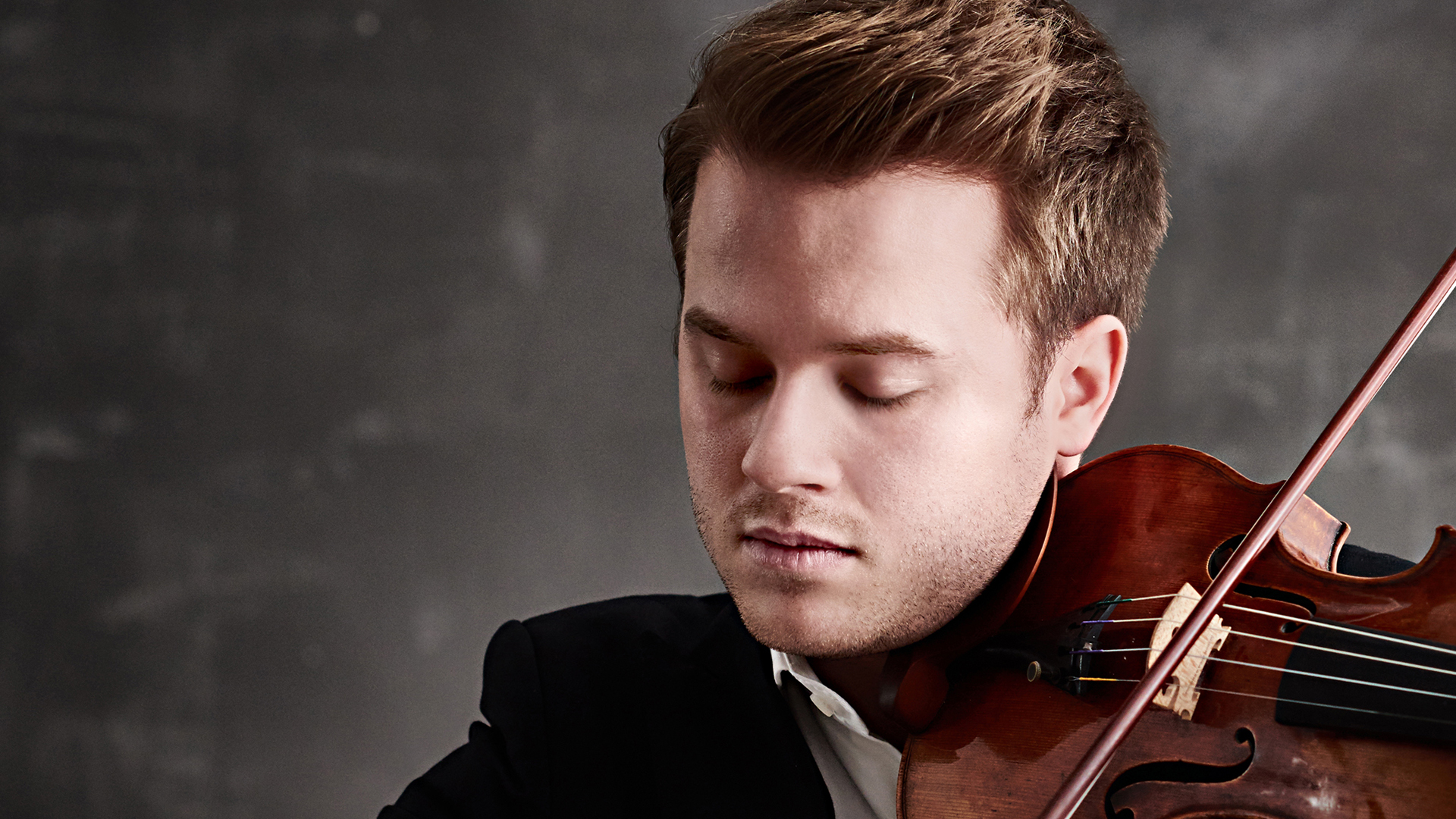“González’s merit is that he creates musical cosmos in which the music breaths and swells, he allows the dialogue between the orchestra sections and its soloists and he is able to connect with the audience. Not many conductors are capable of such a feat” (La containión de Málaga).
Einojuhani Rautavaara's musical output forms a long, light thread in the history of the Helsinki Philharmonic Orchestra. At the end of the violin concerto, one can hear the composer's emotional return to his student years in New York.
Pablo González
Pablo González, born 1975, is Principal Conductor of the Spanish Radio and Television Symphony Orchestra (RTVE) and Artistic Adviser for the RTVE orchestra and choir. Previously, he served as Music Director of the Barcelona Symphony Orchestra and as Assistant Conductor of the London Symphony Orchestra. In his native Spain, González is in high demand and works with the country’s most prestigious orchestras. In addition, he is a sought-after visitor internationally.
Pablo González's core repertoire consists of Russian and German symphonic works, and he is known for his compelling interpretations.
González collaborates with a number of famous soloists, including Khatia Buniatishvili, Beatrice Rana, Renaud Capuçon, Gautier Capuçon, Sol Gabetta, Anne-Sophie Mutter, Isabelle Faust, Frank Peter Zimmermann, Viktoria Mullova and Truls Mørk.
González studied at the Guildhall School of Music and Drama in London. He first captured international attention in the early 2000s after winning the Donatella Flick and Cadaqués conducting competitions.
http://www.pablogonzalez.eu/#cover
Tobias Feldmann
German violinist Tobias Feldmann’s (b. 1991) career took off with his success in international competitions, including the 2015 Queen Elisabeth Competition, the prestigious Joseph Joachim Violin Competition, and the 2012 German Music Competition. Feldmann started his violin lessons at the age of seven and was appointed as a professor at the Würzburg University of Music at the age of 26. He now serves as a professor at the renowned University of Music and Theatre 'Felix Mendelssohn Bartholdy Leipzig'.
Feldmann’s highlights of the 2022–2023 concert season include his debuts with the Helsinki Philharmonic Orchestra, BBC National Orchestra of Wales, and the Swiss Bern Symphony Orchestra. This season, Feldmann will return to the Dutch Residentie Orkest Den Haag, the Bournemouth Symphony Orchestra, and the BBC Philharmonic.
In Helsinki, Tobias Feldmann performs as the soloist in Rautavaara's Violin Concerto. He has also recorded the concerto with the Orchestre Philharmonique Royal de Liège, and his virtuosity on the 2018 album has received recognition.
https://www.tobias-feldmann.com/
Einojuhani Rautavaara: Violin Concerto
Concerto form, for Finnish modernist-mystic composer Einojuhani Rautavaara (1928–2016), meant drama – conflict between the individual and the collective. After hearing the Romanian Eugen Sârbu perform a piece by him in the 1975 Sibelius Violin Competition, he approached Sârbu with the idea of composing a concerto for him, so impressed was he with the demonic, “Paganini-like” virtuoso. They worked together on the project whenever possible, so Rautavaara could immediately test his ideas in practice, and he wrote the final notes in New York in 1977.
Rautavaara likened his concerto to a journey in which the solo violin keeps arriving at new scenery and situations. The opening movement is, he said, a synthesis of a classical main movement and a slow one, the second of a scherzo and a finale. Woven into the first-movement cadenza are comments from various instruments, and for the second-movement one he wrote only the beginning and left the rest for the soloist to compose. The finale is a flashback to the years Rautavaara spent in Manhattan in the 1950s.
Richard Strauss: Ein Heldenleben
Ein Heldenleben (A Hero’s Life, 1898) is often regarded as an autobiographical work, though its composer, Richard Strauss (1864–1949), insisted it was not. He also claimed that the tone poem did not need a programme note, though he did at one stage go so far as to give the episodes descriptive titles (and later delete them) to make the plot easier to follow.
French horns introduce the leading character in a bold theme such as befits a hero; they then proceed to examine him from different angles. Next come his adversaries, petty-minded little creeps. Strauss had in mind the music critics who gave him a hard time. The Hero’s Companion is a musical portrait of his wife, Pauline de Anha the soprano. The next episode finds our hero on the battlefield, his theme transformed into a cantankerous march accompanied by cannon fire. The battle ends in clear victory for the hero, his theme resounding in the strings. The Hero’s Works of Peace is in fact a cavalcade of themes from Strauss’s own tone poems, thus bearing out the assumption that he himself was the hero. His adversaries once again pop up at the beginning of the closing section, as the hero retreats from the world and finds fulfilment. This would again suggest a mighty struggle, but peace is soon restored in a sunny duet for violin and horn.

